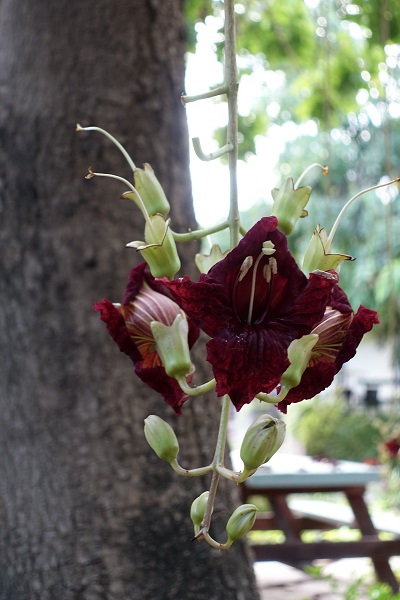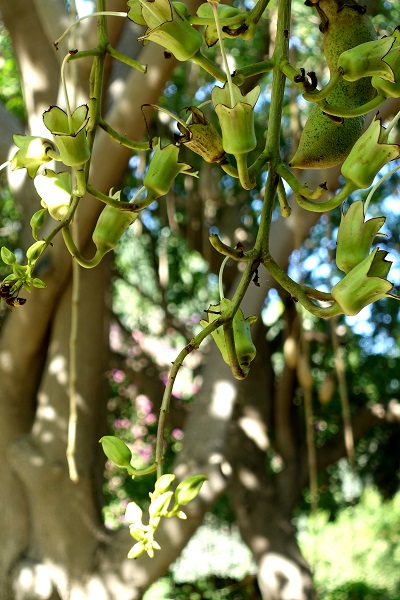Hebrew: קיגליה מנוצה, Arabic: كجلة أفريقية
| Scientific name: | Kigelia africana (Lam.) Benth. | |
| Common name: | Sausage tree | |
| Hebrew name: | קיגליה מנוצה | |
| Arabic name: | كجلة أفريقية | |
| Family: | Bignoniaceae, Trumpet-creeper Family, משפחת הביגנוניים |

|
| Life form: | Tree, mesophanerophyte | |
| Stems: | Up to 25 meters gigh and 10 meters in diameter, smooth, grey-brown bark | |
| Leaves: | In groups of three at the ends of the branches, 10-20 cm long with 3-8 leaflets | |
| Inflorescence: | Panicles, 30-80 cm long | |
| Flowers: | Tubular, bell-shaped, dark red with yellow veins | |
| Fruits / pods: | Berry, sausage-shaped, 30-90 cm long and 7.5-10 cm in diameter | |
| Flowering Period: | August, September, October | |
| Habitat: | Planted | |
| Distribution: | Suitable for planting only in large gardens; because of the falling fruit it is not suitable to serve as an avenue tree | |
| Chorotype: | Zambia | |
| Summer shedding: | Perennating |

Derivation of the botanical name: Kigela, from the Mozambican Bantu name, kigeli-keia, while the common names sausage tree and cucumber tree refer to the long, sausage-like fruit. african, from Africa
The flowers bloom at night, and bats are thought to pollinate the flowers (butterflies also visit the tree). 
|